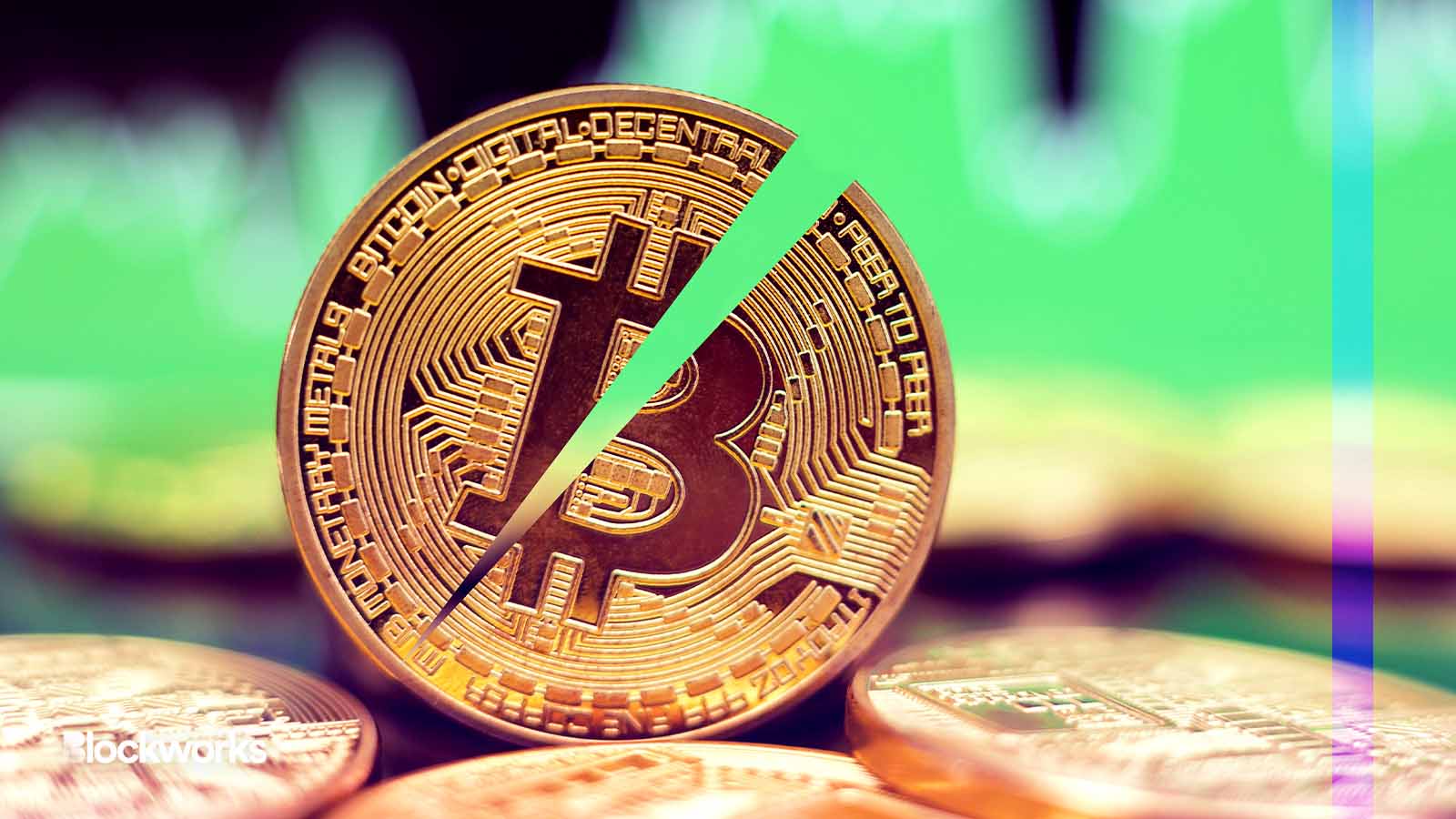BLOK ready for possible BTC rally ahead of halving, spot ETF
Largest blockchain ETF steers clear of top-heavy portfolio for better or worse, but remains long on miners, portfolio manager tells Blockworks

24K-Production/Shutterstock modified by Blockworks
Compared to competing funds — and even to bitcoin itself — the largest blockchain ETF has had subdued year-to-date returns. That is in part by design.
Still, the Amplify Transformational Data Sharing ETF (BLOK) is ready to capture the upside of a potential bitcoin rally, according to fund portfolio manager Dan Weiskopf.
“I actually am very optimistic about the price action that I’m seeing in the way of bitcoin,” he said. “To some degree we have a built-in hedge with our exposure to MicroStrategy and the miners if the economy falls apart and bitcoin rallies.”
BLOK, which launched in January 2018, currently has $410 million assets under management.
The fund’s position in MicroStrategy represented 4.89% of the portfolio on Friday — BLOK’s second-largest holding, behind only Coinbase. Used by many investors as a way to gain exposure to bitcoin, MicroStrategy held 158,245 bitcoin (BTC), as of Sept. 24.
About 18% of the fund’s assets were allocated to bitcoin miners, as of earlier this week, Weiskopf noted. The fund’s allocation to miners peaked at roughly 30% in October 2021 and has gotten as low as about 9%, he said.
Its largest miner positions — each between 3% and 4% — are in Riot Platforms and CleanSpark.
Read more: Inside BLOK ETF: ‘We use the miners to play offense and defense’
Year to date, BLOK is up about 29%. This is significantly below the performance of some other funds targeting equities in the segment, as well as bitcoin’s 61% price jump from the start of 2023.
The Valkyrie Bitcoin Miners ETF (WGMI) and the VanEck Digital Transformation ETF (DAPP) have returned about 100% and 97%, respectively, over that span, according to ETF Database.
“The funds that are passively managed have very high concentration risk, which is good when things go well,” Weiskopf told Blockworks. “But when they don’t go so well, you’re taking on a lot of risk.”
WGMI’s top five holdings accounted for about 50% of the portfolio Friday, while DAPP’s top five holdings amount to about 37% of the fund’s assets.
The top five equities in BLOK, meanwhile, represent 22% of the portfolio. Coinbase is the top position at 4.95%.
“We’re long Coinbase…but we have managed that exposure down,” he said. “I think not being too top-heavy in any one name is important in a very high-beta investment strategy.”
Keep reading for more excerpts from Blockworks’ interview with Weiskopf.
________________________________________________________________________
Blockworks: How might you look to position BLOK’s portfolio ahead of the bitcoin halving (an event slated for April 2024 at which time per-block rewards for miners are cut in half)?
Weiskopf: If you look at the halving, if history repeats itself, you could see a major move in bitcoin. You almost have to be anticipating a major move in bitcoin if you’re long the miners at all.
History repeats itself sometimes, and the delta on the miner would be more than what the price of bitcoin would be.
I don’t think you should expect us to increase the miners more than where we are right now. We feel pretty good about our position. But if we do, it will be incremental, or potentially adding one more bitcoin miner.
Blockworks: Do you expect to see a spot bitcoin ETF in the US?
Weiskopf: I still think that all this back-and-forth between the [US Securities and Exchange Commission] is a positive thing, not a negative thing. It can’t be ignored; people and institutions want access to this asset class.
Whether it happens as a launch in the first quarter or later in 2024, I don’t know. But I’m definitely optimistic around it because of what we’re hearing.
What it will mean is there will be more demand. You can make up numbers the same as I can. But when you factor in that bitcoin supply is shrinking in terms of what’s coming out of the miners and you see more demand from some of the big names…whether it’s BlackRock or Franklin Templeton…they’re doing it because they think there’s demand.
Blockworks: How might spot bitcoin ETF approval impact demand for BLOK?
Weiskopf: I think they definitely both can co-exist. Our emphasis is on the blockchain and companies are trying to capitalize on the trend. Franklin Templeton, as an example, has a $300 million money market fund that’s on-chain. If they were to launch an ETF, we’d get the benefit of that probably through the actual equity in terms of asset growth.
BLOK had a 0.95% position in Franklin Templeton on Friday.
In the context of would one own BLOK and crypto directly, yeah I think that investors [who are] looking for that exposure could own both because they’re maybe correlated but their return streams may be different.
The blockchain is the technology and spot is more of the direct exposure. The disruption within the industries will be felt through the equities more than the direct spot.
Get the news in your inbox. Explore Blockworks newsletters:
- The Breakdown: Decoding crypto and the markets. Daily.
- 0xResearch: Alpha in your inbox. Think like an analyst.






